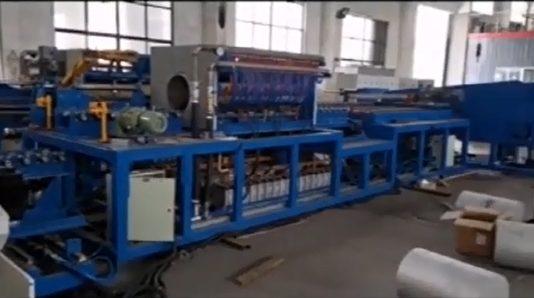- 13
- Sep
Stainless steel heating furnace
Stainless steel heating furnace
The stainless steel heating furnace is an induction heating furnace designed and manufactured for heating stainless steel round bars. This stainless steel heating furnace uses a unique coil design and power configuration for stainless steel non-conductive magnets, so that non-magnetic stainless steel materials can be heated , And achieved good heating effect. Next, the editor of Song Electric Furnace will introduce this stainless steel heating furnace.

1. The principle of stainless steel heating furnace:
We know that the principle of induction heating is that electromagnetic cutting metal generates eddy current inside the metal to heat. This heating is subdivided into two types: 1. Electromagnetic cutting heating; 2. Current flow generates heat heating. For the heating of non-magnetic materials such as stainless steel, alloy aluminum, alloy copper and other metal materials, the method of high current heating is adopted. In this way, the design and manufacture of induction heating furnaces are also different from ordinary intermediate frequency heating furnaces. It is induction heating. In fact, the focus of internal induction heating is different.
2. Heating process of stainless steel heating furnace
The heating process of the stainless steel heating furnace: firstly set the temperature, time and discharge interval of the stainless steel heating and heat treatment to realize the heat treatment processes such as heating, quenching, tempering or quenching and tempering. Ensure the realization of automatic control of the entire process of stainless steel from entering the furnace to the furnace, and ensure that the buyer’s stainless steel heat treatment process requirements are met. The technical engineers of Haishan Electric Furnace have more than many years of rich experience in stainless steel heating furnaces. There are many cases of heating process of stainless steel heating furnaces, which can meet the heating of stainless steel bars under any working conditions.
3. Composition of stainless steel heating furnace:
1. Furnace frame (including capacitor bank, water circuit, circuit, and gas circuit)
2. Inductor, heating furnace head, induction coil
3. Link wires/copper bars (power supply to furnace body)
4. Input and output system, roller conveying mechanism, pressure roller conveying mechanism
5. Infrared temperature measurement and sorting, three sorting temperature measurement device
6. Siemens PLC control
7. HSBL type closed cooling tower
8. Energy-saving intermediate frequency power supply, thyristor type intermediate frequency power supply
Fourth, the characteristics of stainless steel heating furnace:
1. The stainless steel heating furnace is controlled by the medium frequency induction heating power supply of the stainless steel heating furnace, which can realize high-power adjustment and save more than 30% of energy than ordinary power supplies.
2. The stainless steel heating furnace has low energy consumption, good plastic processing, low deformation resistance, insignificant work hardening, and easy quenching and tempering and rolling, which reduces the energy consumption required for metal deformation.
3. The stainless steel heating furnace has a unique cooling cycle system to ensure that the stainless steel quenching and tempering furnace works continuously for 24 hours.
4. The stainless steel heating furnace usually uses large ingots and large reduction rolling in hot rolling. The production rhythm is fast and the output is large, which creates conditions for large-scale production.
5. The characteristics of the hot rolling method heated by the stainless steel heating furnace determine the anisotropy of the performance of the workpiece after rolling. Crystal texture, there is obvious directionality in punching performance
6. The stainless steel heating furnace adopts PLC human interface automatic control program, no danger of high voltage of ten thousand volts, and safe operation. 7. The stainless steel heating furnace has high reliability, simple and convenient maintenance, and perfect self-protection functions such as overvoltage, overcurrent, overheating, lack of phase, and lack of water.
